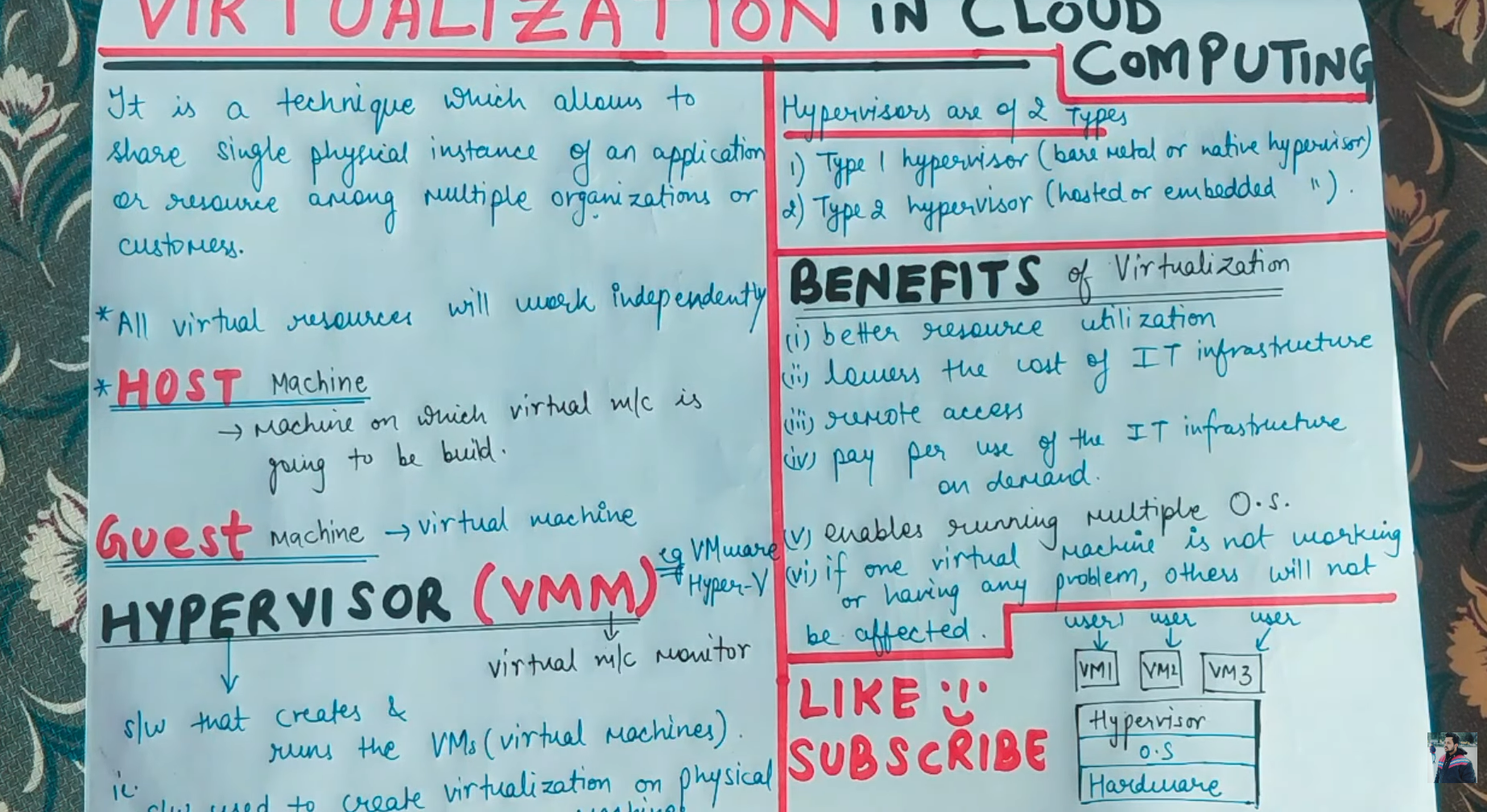Explain virtualization in cloud computing.

Understand the Problem
The image provides an overview of virtualization in cloud computing. It covers key aspects such as the definition of virtualization, types of hypervisors, benefits of virtualization, and related concepts like host machines and guest machines.
Answer
Virtualization shares physical resources among users through hypervisors, offering benefits like better resource use and lower costs.
Virtualization in cloud computing is a technique that enables sharing a single physical resource instance among multiple customers or organizations. Hypervisors, such as Type 1 (bare metal) and Type 2 (hosted), manage virtual machines (VMs), ensuring they operate independently. Benefits include better resource utilization, lower IT costs, remote access, pay-per-use models, and the ability to run multiple OS, with the isolation of VMs ensuring that issues in one do not affect others.
Answer for screen readers
Virtualization in cloud computing is a technique that enables sharing a single physical resource instance among multiple customers or organizations. Hypervisors, such as Type 1 (bare metal) and Type 2 (hosted), manage virtual machines (VMs), ensuring they operate independently. Benefits include better resource utilization, lower IT costs, remote access, pay-per-use models, and the ability to run multiple OS, with the isolation of VMs ensuring that issues in one do not affect others.
More Information
Virtualization is the fundamental technology that makes cloud computing possible. It allows cloud providers to offer scalable and flexible services by abstracting the hardware layer.
Tips
A common mistake is confusing virtualization with cloud computing. Virtualization is a technology, while cloud computing is a service delivery model that relies on virtualization.
Sources
- Virtualization in Cloud Computing and Types - GeeksforGeeks - geeksforgeeks.org
- What is Virtualization? - Cloud Computing Virtualization Explained - aws.amazon.com
- Virtualization in Cloud Computing - Javatpoint - javatpoint.com
AI-generated content may contain errors. Please verify critical information